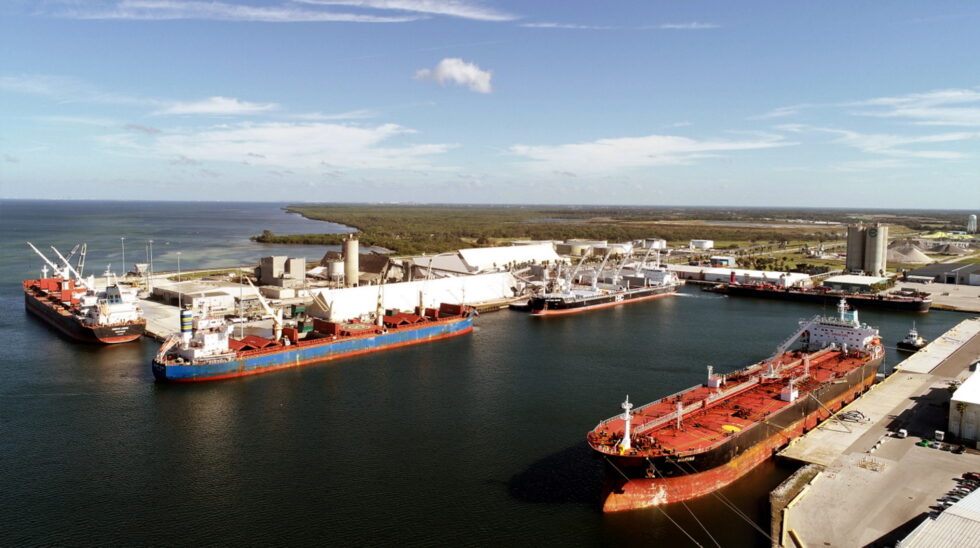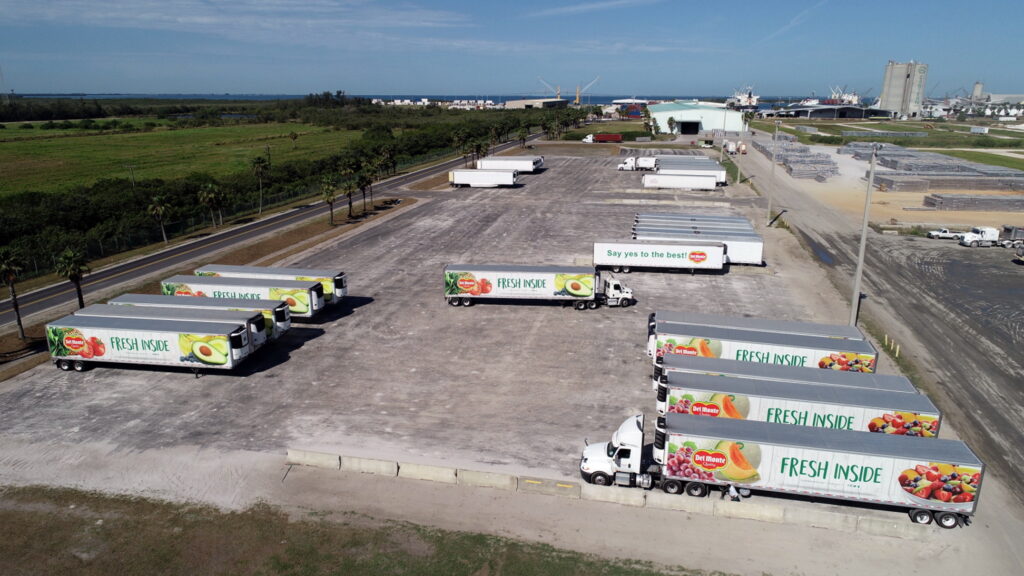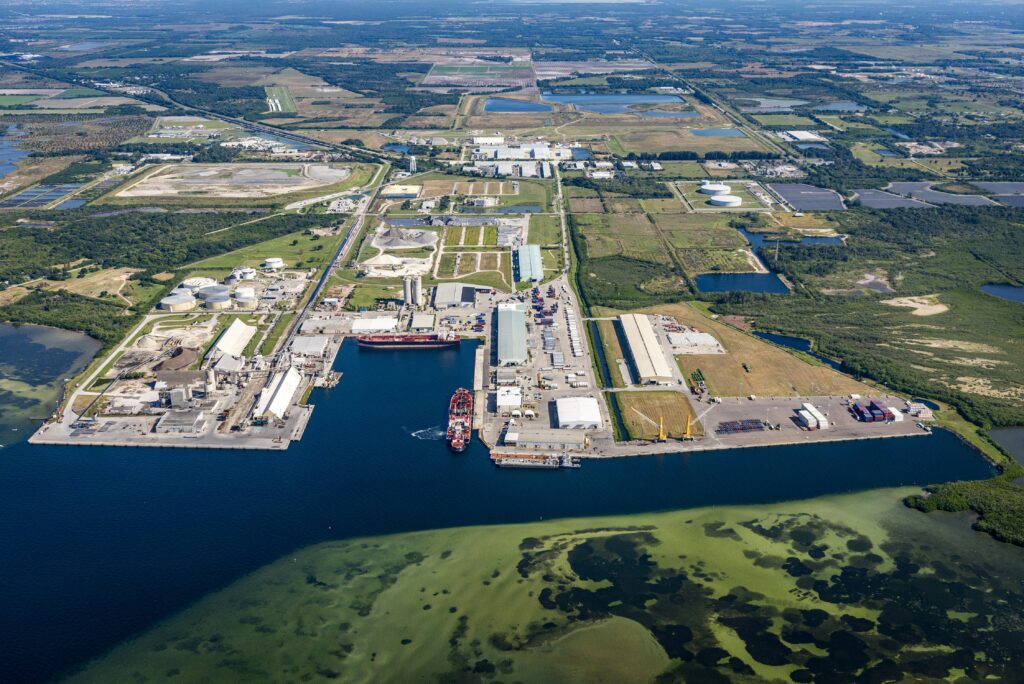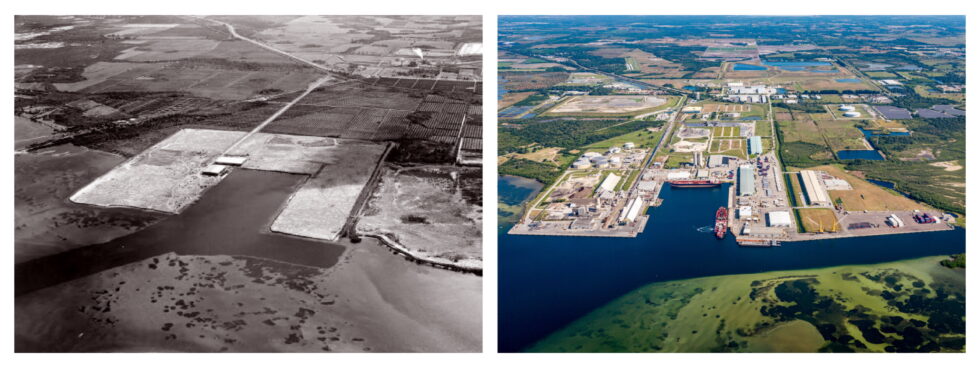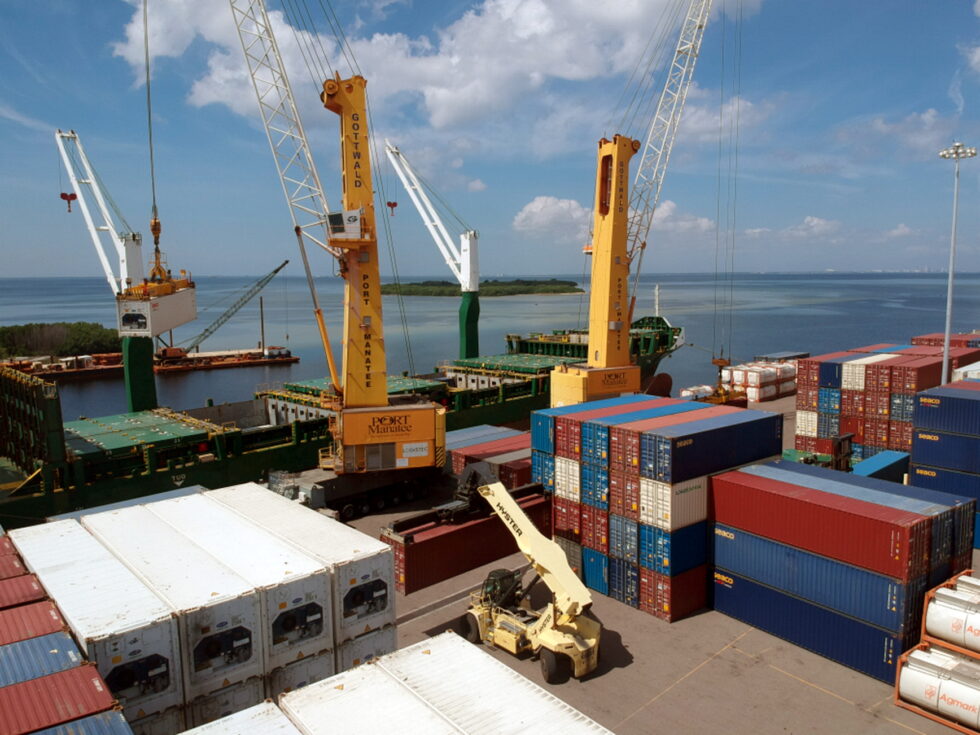
PALMETTO, Florida – Port Manatee’s dynamic containerized cargo trade continues to swell at a record pace, surging nearly 55 percent in the just-ended fiscal year, according to figures reported today [Tuesday, Oct. 13].
In the fiscal year ended Sept. 30, an all-time-high 88,466 twenty-foot-equivalent container units crossed Port Manatee docks, up 54.6 percent from the preceding 12-month period, when the port saw moves of 57,239 TEUs. That figure was up 49.2 percent over fiscal 2018, when 38,361 TEUs moved through the port.
“With container throughput more than doubling over the course of just two years, Port Manatee is increasingly fulfilling regional consumer demands for goods ranging from fresh produce to appliances,” said Carlos Buqueras, Port Manatee’s executive director. “As our dockside container yard expansion project advances toward mid-2021 completion, Port Manatee is positioning to continue to efficiently handle rapidly growing cargo volumes.”
The container yard expansion is adding 9.3 acres to the existing 10-acre paved facility adjoining Port Manatee’s Berth 12 and 14 docks.
Port Manatee’s vibrant container trade is being driven by robust growth of Port Manatee-based World Direct Shipping, which has been importing produce and other goods from Mexico since 2014, and Del Monte Fresh Produce Co., which is in its fourth decade of bringing Latin American fruit to the port.
While the COVID-19 pandemic and related impacts did not slow Port Manatee’s container upsurge – including a 24.9 percent rise in containerized cargo tons to 668,672 – some other cargo sectors were negatively affected in the just-ended fiscal year. The port’s total cargo tonnage for fiscal 2020 of 9,327,183 was down 7.5 percent from the record 10,081,743 tons in fiscal 2019, with liquid bulk tonnage slipping 8.6 percent, to 5,957,157, and dry bulk tonnage falling 16.7 percent, to 1,866,383. Led by increased volumes of lumber and scrap metal, Port Manatee’s general cargo throughput was up 9.3 percent, to 531,019 tons.
Buqueras noted that volumes of fuels moving through Port Manatee are now back on the upswing as Southwest Florida motorists begin to drive more.
Priscilla Whisenant Trace, chairwoman of the Manatee County Port Authority, said she is encouraged by the port’s latest cargo numbers, realized amid implementation of enhanced health and safety measures.
“We commend the men and women who are maintaining essential operations at Port Manatee, serving consumers of Southwest Florida and beyond,” she said. “Sustained growth of Port Manatee’s container trade is a testament to success of our diverse strategy, with key infrastructure investments poised to facilitate even greater cargo activity and deliver still more positive socioeconomic impacts throughout our region.”
Located “Where Tampa Bay Meets the Gulf of Mexico,” Port Manatee is the closest U.S. deepwater seaport to the expanded Panama Canal, with 10 40-foot-draft berths serving container, bulk, breakbulk, heavylift, project and general cargo customers. The self-sustaining port generates more than $3.9 billion in annual economic impacts while providing for more than 27,000 direct and indirect jobs, all without benefit of local property tax support.
MEDIA CONTACT:
Virginia Zimmermann
Director of Communications and Public Relations
Office 941-721-2323
Cell 941-932-1006
vzimmermann@portmanatee.com

